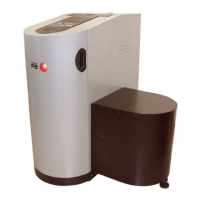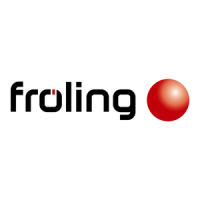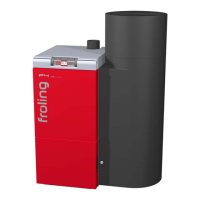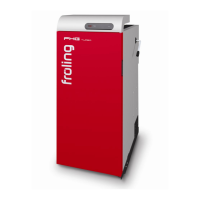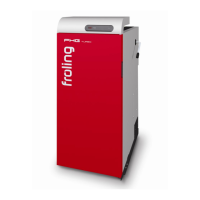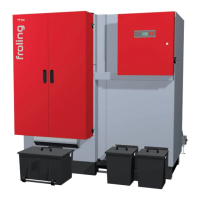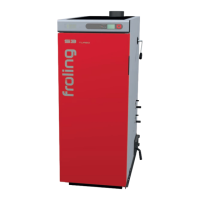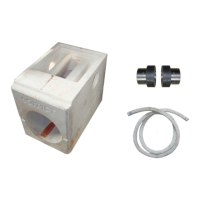RL = Nominal Load, PL = Partial Load
1.3 Installation Information
Water lines should not be located in close proximity to the storage
area or the feeder units due to the dangers posed by condensation
and bursting water pipes!
Check the delivered items for foreign objects in the individual
components.
In the pellet store room an impact cushion must be installed on the
opposite side to the filler pipes. This reduces wear on the pellets
when they are blown in and stops the finish being worn off. Broken
pieces of masonry or finish and other foreign bodies (small stones,
pieces of wood, screws, etc.) can block the delivery system or the
pellet feed into the boiler and cause the system to fail. In case of
faults due to such foreign bodies, the guarantee is void.
In time pellets leave dust on the ground; this can impair the process
of moving them from the pellet storage area.
For this reason you should check and clean if necessary before
refilling.
1.3.1 Hose lines
For the hose lines used with the suction device, the universal suction
systems, and the silo delivery unit, please observe the following:
Do not kink the hose lines! Minimum bending radius = 12” (30cm).
Lay the hose lines as straight as possible! If the lines are
sagging, it can lead to so-called “pockets.” Problem-free
pellet feeding cannot be guaranteed.
Lay the hose lines in short sections away from walking areas!
Hose lines are not UV-proof!
Therefore: do not lay the hose lines outdoors!
Hose lines are suitable for temperatures up to 140 ºF (60°C)!
Therefore: Hose lines must not come into contact with flue
gas pipes or un-insulated heating pipes!
Hose lines must be earthed on both sides to ensure that no
static charge builds up as a result of transporting the pellets!
The suction line must be in a single section!
The return-air line can be made up of several sections, but
potential equalisation must be established throughout the
line!

